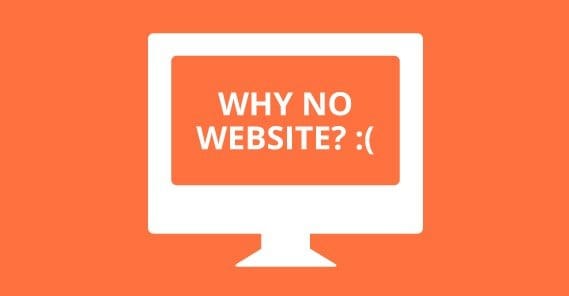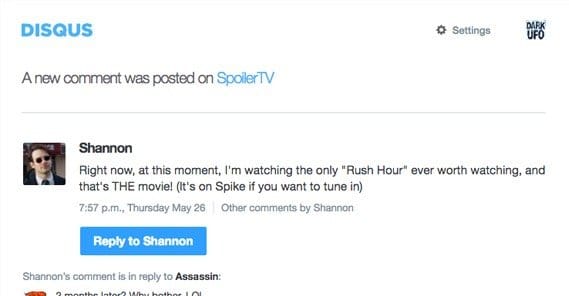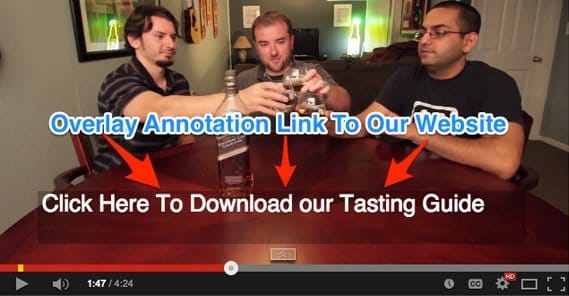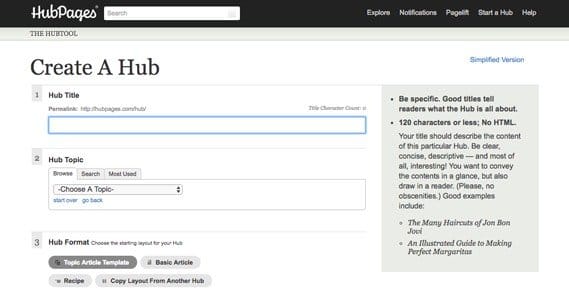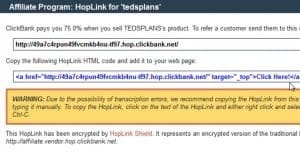How to Promote an Affiliate Link Without a Website
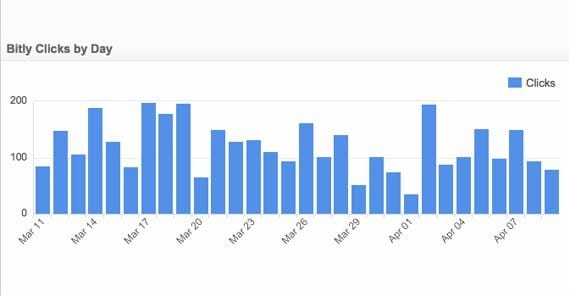
Affiliate marketing is pretty tough. A lot of newcomers to the idea see the amount of work involved in setting up a website, and they ask themselves; can I do this without a website? After all, they save the expense of a domain name and web hosting. They don’t need to set up a CMS and a bunch of plugins or what have you. They don’t have to worry about security or building a web audience. All they have to do is replace all of the benefits a website brings to the table with alternative traffic sources.
The core of affiliate marketing is your affiliate link, and getting that link in front of as many potentially interested people as possible. A website helps you do this by having a lot of persistent content in one place, racking up SEO value and showing up in Google search results. It’s also a stable base from which to work with other links, ads, social media, and a handful of other traffic sources. Without a website, you lack this base, so you will be working harder to promote your link in more places without the benefit of a home base to tie it all together.
For this reason, I will recommend that you put forth the effort to make a website for your affiliate business. However, I’m not going to belabor the point. You’re reading this post because you want to try without a site, and by all means, go ahead. Just remember, you can always set up a site later and add it to the list.
What I’m going to do here, then, is list various techniques you’ll want to explore and invest in so you can set up as much of a web presence as possible without a site. While you can get by using just one or two of them, you won’t make much money, so I recommend you use as many as you can. Thankfully, a lot of them require minimal investment or are generally passive, and thus can build up over time.
Option 1: Comments
This first option is all about communities. It’s simple, too, but it’s tricky because a lot of the techniques you’ll be using are also those techniques used by spammer and spambots, so a lot of people will ignore you or delete your posts without looking at them. As a consequence, you need to be subtle and clever.
What I’m talking about is leaving comments on blogs, on web forums, and in social media groups. This gives you a lot of potential communities, but you’re limited by the amount of time you’re willing to invest in them.
It works like this. First, you pick your affiliate product of choice. Unfortunately, due to the limitations of this technique, you’re going to be limited in the number of products you can reference. You can create more than one persona for use on different sites, and can promote different offers through them, but then you have to keep all of that straight.
For an example, let’s pick a dog training product of some kind. I’m sure there are dozens of such products on Amazon, which is one of the better affiliate networks out there. You now want to identify potential communities around the web where you can make your presence known. What sort of communities do you want to go for?
- Blogs. Look for blogs with a decent readership, preferably in a dog-related niche, though not necessarily dog training itself. You don’t want to compete with the site owners, after all.
- Web forums. While forums are going out of style, you can still find some communities centered around various interests, and a general pets or dog-related forum should be easy to find.
- Social groups. Facebook groups are the big one here, but you can also use Twitter lists, Google+ groups, LinkedIn groups, and any other group you want.
Now you need to establish a presence on these sites. This means becoming a member and participating in the discussions that happen in the group or on the forum. You’re not looking to advertise directly, so avoid stepping in with “hey I’m promoting this product here’s a link” posts. Instead, simply make yourself a valued member of the community.
So where does the promotion come in? Normally, if you had a website, I would say you can promote your content by commenting when it’s relevant with a link, but you don’t have a site or the content to promote. Instead, all you can do is add your affiliate link to your profile or your forum signature. This is how users will be able to see it, when they stumble across it, and can click and explore. Ideally, they will convert, but it’s not going to be at a high rate.
That’s the drawback of this method; it’s a lot of setup time and a lot of investment for no guaranteed returns. You aren’t directly promoting your offer, you’re promoting yourself as an authority and hoping people explore and find your offer. Chances are, not many people will.
Option 2: Books
Remember how I mentioned using a website as a basis for content, that you can then advertise and recommend? This idea spins into that. Essentially what you’re doing is creating high quality content in your niche. To run with the dog training idea, we’d write a bunch of books about how to train dogs. I would say divide it up by breed, so you have How to Train a Stubborn Husky, How to Train a Stubborn Labrador, and so on. These books can have roughly the same content, customized to the breed, which is one thing you have going for you compared to a website. Under other circumstances, this would be too close to duplicate content and could hurt a site.
Note: if those books actually exist, I didn’t write them and am not promoting them, I just made up the titles on the fly for examples.
The books should be valuable, because you want positive reviews and you want them to spread as much as possible. The higher they can get in Amazon’s rankings, the better off you’ll be.
The promotion here comes in two forms. First, the books themselves will contain links to your affiliate offers. Often, you will be able to include five or six different sorts of links to different products and accessories along the way. A relevant course on a different site might be beneficial as well. Monetize them however you can. Just be aware that you can’t over-do it; your books need to be high quality and need to have value in them, they can’t just be thin fodder for links.
The other form of promotion is promoting the book itself. You can run your book link through other ideas on this list, but will probably focus primarily on paid ads and social media for this particular method.
As an added bonus, if you’re charging for the ebook you publish on Amazon, you can not only make some money from selling it, but also make a commission by using the Amazon affiliates program to create affiliate links to your own products.
Option 3: Video
Video is a great way to do basically the same thing you do with books, on a different platform and with a different style of content. Now, there are two fundamental differences. The first is length. Content on YouTube is going to be much shorter in general than an ebook would be. You’re generally going to want to stay under 5 minutes for a video. You can go longer, of course, but you really need a selling point for anyone to watch a lengthy video.
For something like dog training, individual lessons as videos can be a great idea. On top of that, addressing specific questions can get you a lot of niche hits.
The other primary difference is cost. This has two facets. On one hand, you aren’t selling videos on YouTube. You can monetize them, which can get you a few cents here and there, but it’s not as lucrative as an ebook. On the other side of the coin, videos cost more to produce than books. Books are just text and a layout. Videos need, well, video. And audio, and scripts, and in the dog training example, probably a dog.
The affiliate offer comes in the description and, if you can, an annotation link at the end of your video. These are both pretty standard, and hundreds of marketers are using YouTube for this purpose already. However, you’re not limited to just YouTube. You can also post the videos to other video services like Vimeo, and to Facebook. If they’re short enough, they can also go on Instagram.
Facebook in particular is great because you can combine this with paid video ads, which Facebook is promoting in an attempt to compete with YouTube. This can help your reach significantly, though of course it’s no guarantee that you’ll see a high conversion rate. That comes down to the quality if your video and how well you pitch your product.
Option 4: Hubs
Content can pull in readers, and content is a basis for links. This is the foundation for all of these techniques. Something missing from all of the above, however, is SEO. Videos don’t have SEO outside of their descriptions because Google can’t really index video content yet. Books aren’t indexed because they can’t be seen for free and publicly. Blog comments and such are generally not indexed or are given very little weight.
One way to create content that is indexed, without a website, is to use HubPages. HubPages is a site where anyone can sign up to be a writer, where they create things for the site and become an authority in their own little niche. Squidoo was a similar site that HubPages bought and merged with a few years ago.
There’s not a lot to say here about this option, because it’s the same advice you would get for writing a blog. Create high quality content with narrow focus centered around your primary niche. Add in an affiliate link where appropriate. Act as an influencer by responding to comments when you get them.
Option 5: Ads
This final option is a tricky one. Paid advertising has the potential to be very lucrative for you, but it also has the potential to backfire. All of the other options on this list take time to set up, but are more or less free unless you’re paying to produce videos, write content, or speed up the setup times. With paid ads, you’re required to pay for the exposure you get, and you might not make that money back.
Paid ads come in many forms. You can pay to post in classified ads, you can pay for ads on the Yahoo/Bing ad networks, you can pay for Google ads, you can pay for Facebook and other social ads; almost every site these days has an ad network attached.
Some of you might be wondering why I list Yahoo and Bing ahead of Google here. The reason for that is because they allow affiliate links in their ads, whereas Google does not. With Google, you will have to filter your link through a different form of content. You’ll be paying to advertise your books or your videos, not your offers.
Facebook, meanwhile, is great as mentioned above because you can take your video production and simply convert it to a video ad with a few clicks. This allows you to directly and easily promote your videos with some advanced targeting.
Another downside to paid ads is the lack of control you have over the landing page. If you’re promoting an affiliate link, you have to hope the affiliate landing page is capable of making the sale, because you have no intervening content to sweeten the deal.
Overall, though, every method above can be improved by adding a website to the mix. It’s possible to make money, even decent money, using affiliate marketing with no website, but you’re honestly just making it harder for yourself.

 ContentPowered.com
ContentPowered.com
